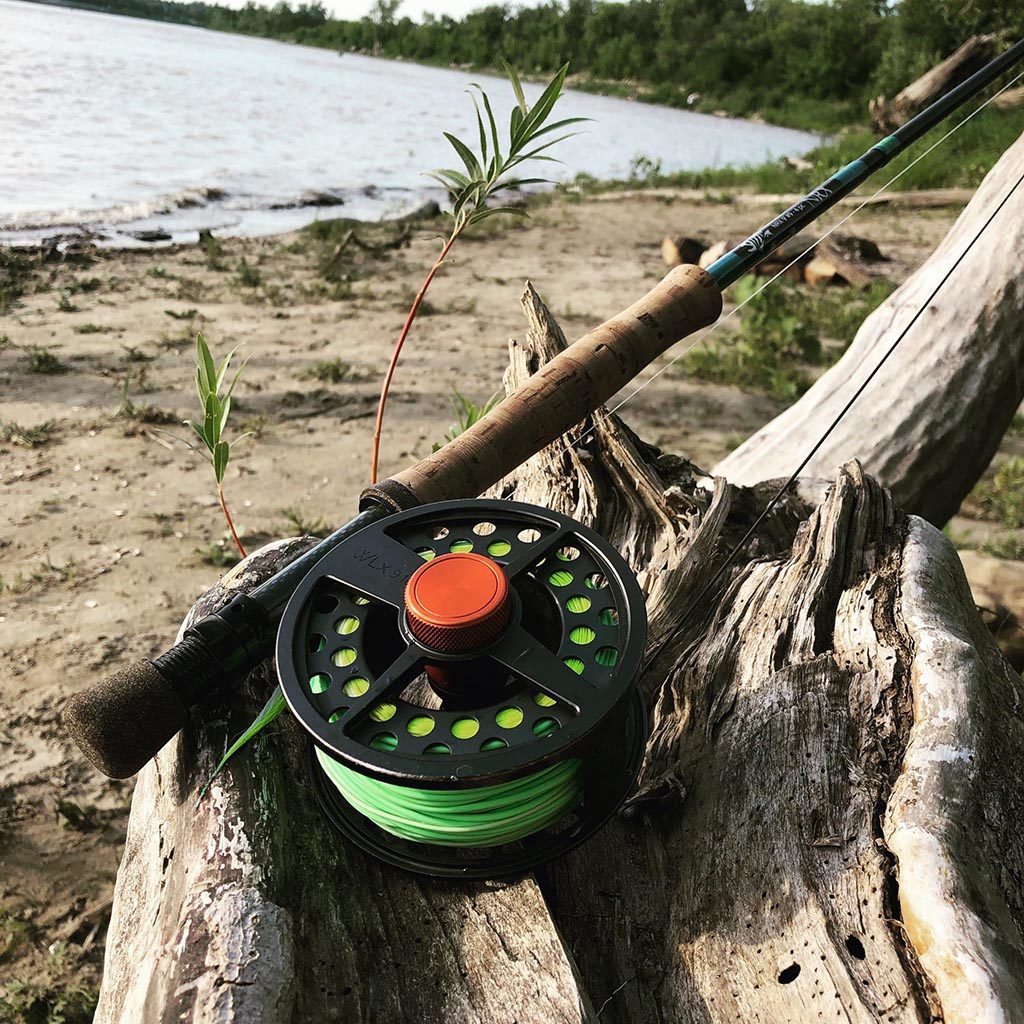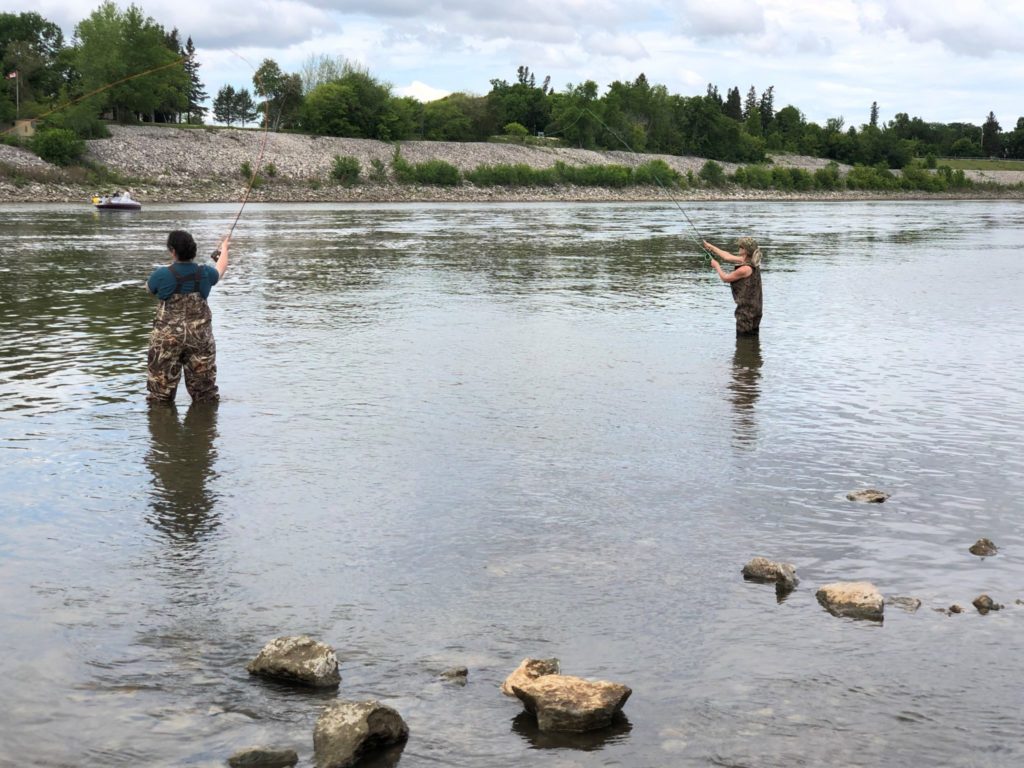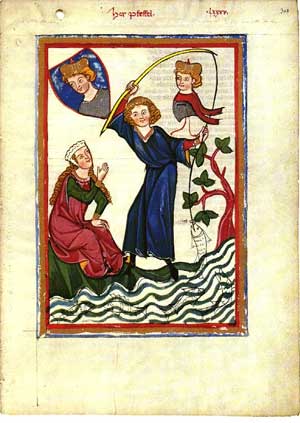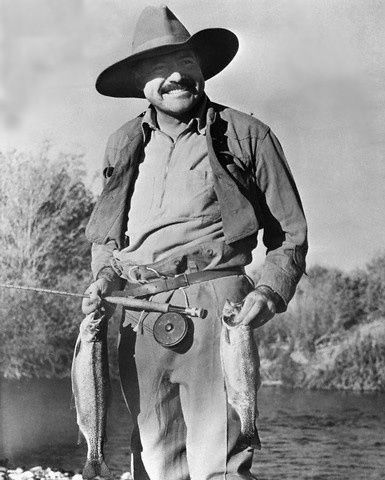
“If fishing is a religion, fly fishing is high church.” – Tom Brokaw
Since man first discovered the bounty of lakes and oceans, they began to experiment with better ways of catching fish. First by hand and likely net, then by Gorge (a sharpened piece of wood or bone designed in a way that allows a fish to swallow it before it slides sideways, trapping itself in the gullet or innards of a fish). Then, around 3000 years ago an entrepreneuring individual shaped a piece of bone into a simplified version of the hook we know and use today. It didn’t take long after that before someone, (likely unable to find suitable a bait shop complete with grubby and despondent teenager manning the minnow tank), tied a couple of feathers to a hook and created the first fly. And so, began a long evolution culminating in rich old dudes wearing silly hats, flailing around while their guide rolls their eyes and asks him or herself why they chose this line of work instead of literally anything else. Or so it appears on the surface of things.
While there’s some truth to that line of thinking – fly fishing has, since at least the 15th Century been practiced by English Royalty, the reality is that us filthy commoners have been fly fishing since before the 2nd century. Claudius Aelianus describes Macedonians fly fishing in his book – De Natura Animalium which dates to around 200 AD “They wrap the hook in scarlet wool, and to the wool they attach two feathers that grow beneath a cock’s wattles and are the colour of wax. The fishing-rod is six feet long, and so is the line. So they let down this lure, and the fish attracted and excited by the colour, comes to meet it, and fancying from the beauty of the sight that he is going to have a wonderful banquet, opens wide his mouth, is entangled with the hook, and gains a bitter feast, for he is caught.”

Aelianus observed that a certain species of “speckled fish” would lay in wait, just below the surface and when a bumblebee sized fly referred to as “Hippūrus” would settle on the stream the fish would snatch it from the surface of the water. Anglers of the time would attempt to use the flies as bait, however when hooked “it destroys the natural bloom; their wings wither and the fish refuse to eat them”. So naturally the Macedonians created a fly pattern to mimic the Hippūrus to great effect and so fly fishing entered the annals of history.
The next major breakthrough in fly fishing came in the 4th century when short branches were replaced by longer jointed rods, next some forward thinking son of a gun thought to add rings which would permit the line to run along the rod, allowing for longer line to be used. This longer line had a bad habit of tangling on reeds, rocks, children, small dogs, shrubs… fruit bats (probably), and anywhere a line is not supposed to go, so the first reel was invented.

During the 15th century, recreational fishing became popular in Europe, specifically with European royalty and elites. One of the first English essays dedicated to fly fishing titled “The Treatyse of Fysshynge with an Angle” was penned by the original trout bum Dame Juliana Berners, prioress of Sopwell Nunnery. In her essay she lays the foundation for fly fishing by creating a how to manual complete with instructions for tying 12 different fly patterns for trout and grayling. (There’s no word on whether she included instructions for landing a lucrative endorsement deal with G Loomis although this author’s highly educated guess is that chapter will be found on a forgotten wood cut somewhere next to an ancient pair of Simms Freestone’s).
At some point during the 18th and 19th century silk replaced braided horsehair for lines and the earliest iterations of the modern fly reel were born. Horsehair line was uniform in diameter and it was discovered that different materials such as silk could create tapered lines, which allowed for more accurate and longer casts. In 1841 George Pulman, a journalist and newspaper maverick wrote Vade-Mecum of Fly-Fishing for Trout, the first book of detailed instruction on how to fish a dry, floating fly. A few years later, Samuel Philippe built the first split bamboo section for a fishing rod. This new design would allow rod builder Hiram Leonard to create rods light, stiff and fast enough to cast the modern silk lines great distances. Incidentally this was also the birth period of fly anglers bragging over cocktails about their casting distance and prowess…. (citation needed).

Through the 19th century, fly fishing continued to gain popularity and spread through the world. This was due in part to increased leisure opportunities for middle and lower classes. The great unwashed discovered that fly fishing was not only effective but a great way to spend time afield. Average working-class people were flocking to the sport much to the chagrin of the upper class who were not open to arguing with average Joe about the horrors of the new practice of using wet flies when dry flies were ineffective. (I imagine a Rich Uncle Pennybags type oil tycoon popping his monocle after reading G.E.M Skues book – The way of the Trout Fly which hugely influenced the development of wet-fly fishing).
Thankfully most average people didn’t care what the upper-class elite thought about their wet-flies and popper patterns and the sport enjoyed steady growth through the 1920’s. Interest in fly fishing waned briefly through the 30’s and 40’s somewhat, due in part (at least in America) to the great depression.. and in other parts of the world due in part to some jerk with a silly mustache dropping bombs on everyone. In the 1950’s the advent of inexpensive fiberglass rods, synthetic fly lines and monofilament leaders revived the popularity of fly fishing and the pursuit is growing still to this day.

Currently interest in fly fishing feels like it is soaring to new heights. Fly fishing in any form, wet, dry, poppers, saltwater and freshwater is widely accepted as more and more anglers try their hand at chuckin’ fluff. Fly fishing is challenging, rewarding and the feeling of a proper cast or a landed fish is amazing. The quiet contemplation that still water nymphing affords simply cannot be beat and the shear volume of how-to books, videos and blogs makes fly fishing more accessible than ever before. Finally, I hope you found this both entertaining and somewhat informative. Until next time, I’ll see you on the river.
“The great charm of fly-fishing is that we are always learning.” – Theodore Gordon
“There is no greater fan of fly fishing than the worm.” – Patrick F. McManus

